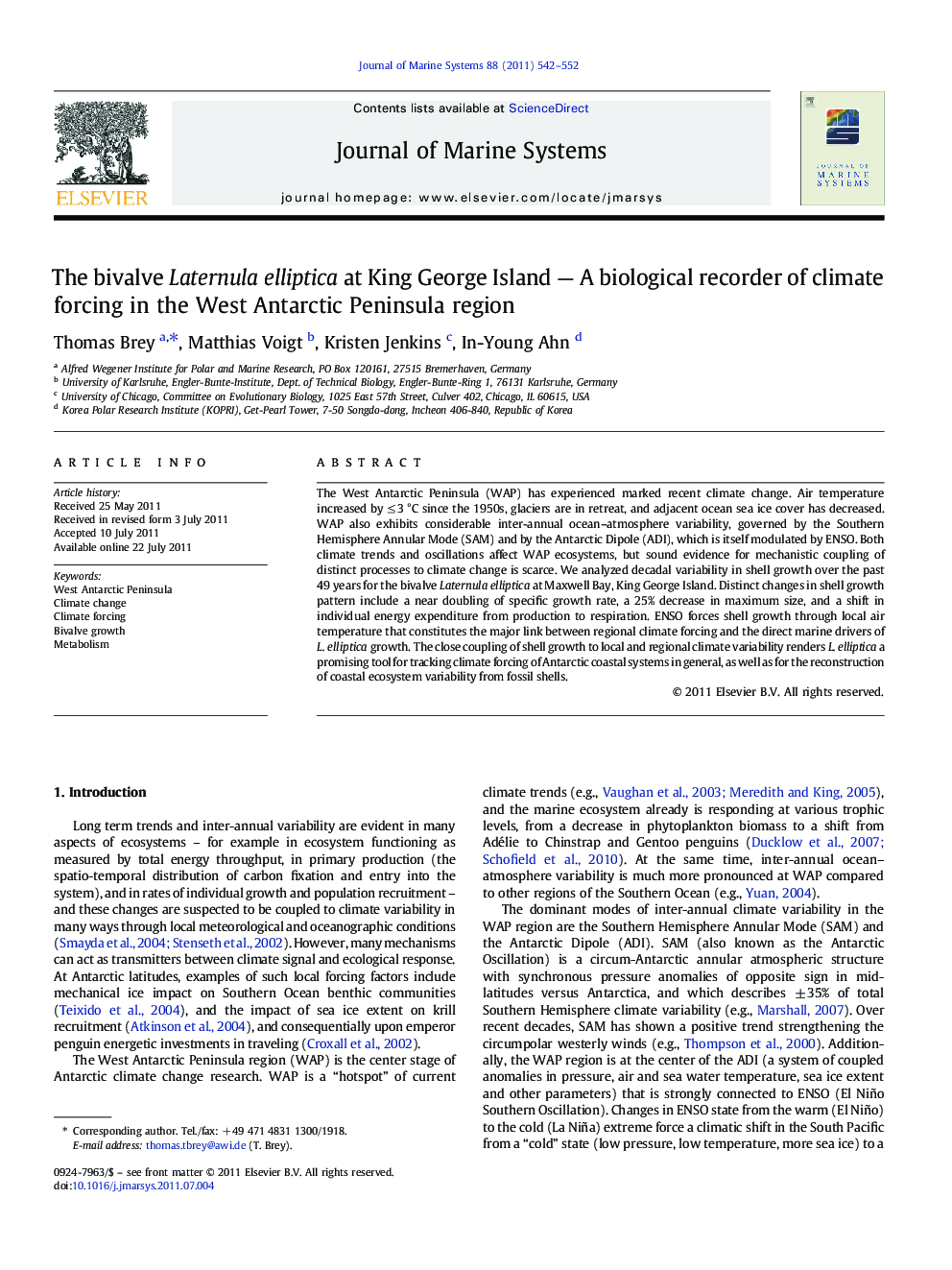| Article ID | Journal | Published Year | Pages | File Type |
|---|---|---|---|---|
| 4548391 | Journal of Marine Systems | 2011 | 11 Pages |
The West Antarctic Peninsula (WAP) has experienced marked recent climate change. Air temperature increased by ≤ 3 °C since the 1950s, glaciers are in retreat, and adjacent ocean sea ice cover has decreased. WAP also exhibits considerable inter-annual ocean–atmosphere variability, governed by the Southern Hemisphere Annular Mode (SAM) and by the Antarctic Dipole (ADI), which is itself modulated by ENSO. Both climate trends and oscillations affect WAP ecosystems, but sound evidence for mechanistic coupling of distinct processes to climate change is scarce. We analyzed decadal variability in shell growth over the past 49 years for the bivalve Laternula elliptica at Maxwell Bay, King George Island. Distinct changes in shell growth pattern include a near doubling of specific growth rate, a 25% decrease in maximum size, and a shift in individual energy expenditure from production to respiration. ENSO forces shell growth through local air temperature that constitutes the major link between regional climate forcing and the direct marine drivers of L. elliptica growth. The close coupling of shell growth to local and regional climate variability renders L. elliptica a promising tool for tracking climate forcing of Antarctic coastal systems in general, as well as for the reconstruction of coastal ecosystem variability from fossil shells.
► Inter-annual variability in growth of L. elliptica at KGI is closely coupled to ENSO. ► ENSO forcing works through air temperature mainly that affects local marine drivers. ► Climate warming increased growth rate and reduced maximum size of L. elliptica. ► Lifetime energy budget shifted correspondingly from production to respiration.
